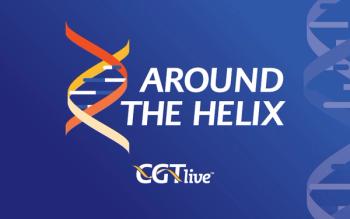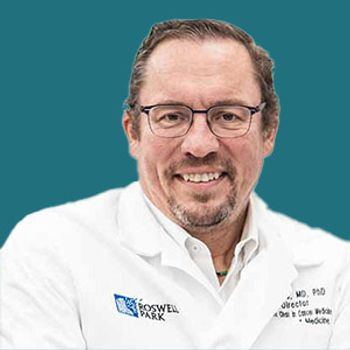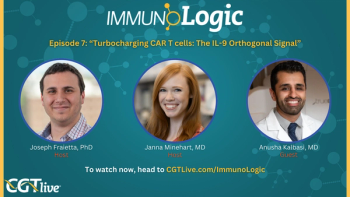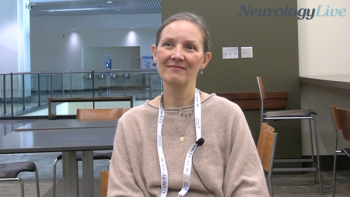
The Phase 2 Trial for CD5-Directed CAR-T MB-105 in R/R T-Cell Lymphoma
Sarah Hein, PhD, the chief executive officer and cofounder of March Biosciences, discussed the company’s trial design presentation at ASCO’s 2025 meeting.
March Biosciences is currently developing MB-105, an investigational CD5-directed chimeric antigen receptor T-cell (CAR-T) therapy, with the intent of addressing unmet needs in the treatment of relapsed/refractory (r/r) CD5-positive T-cell lymphoma. Notably, the design of a recently launched phase 2 clinical trial (NCT06534060) for the product is being presented by the company at
CGTLive® got in touch with Sarah Hein, PhD, the chief executive officer and cofounder of March Biosciences, to learn more about MB-105 and the key takeaways from the presentation. Hein explained the therapy's intended role, discussed the trial, and also touched on future plans for the program, highlighting the company's openness to new collaboration opportunities.
CGTLive: Can you give some background context about MB-105 and how it is meant to address unmet needs?
Sarah Hein, PhD: MB-105 is an autologous cell therapy for CD5-positive hematological cancers. It's currently in a phase 2 trial for T-cell lymphoma, which is a severely under-addressed hematological malignancy, and is also applicable to other CD5-positive cancers, including T-cell leukemia, mantle cell lymphoma, chronic lymphocytic leukemia, and potentially other T-cell driven diseases.
Can you give an overview of the trial design that March Bio will be presenting at ASCO this year?
The phase 2 trial that we're presenting at ASCO is targeted towards T-cell lymphoma. If you're familiar with this indication, unfortunately once patients enter the r/r setting, there really is not a standard of care. These patients have about a less-than-20% survival over about 3 years, and that's because there's a handful of salvage therapies available to these patients, but not a lot else. As a consequence of that what's really interesting about CD5 is it's widely expressed across both peripheral T-cell lymphoma (PTCL) and cutaneous T-cell lymphoma (CTCL). It covers about 70% to 80% of the patients, and we have a trial design that is therefore available to patients with PTCL at second line or above and CTCL at third line or above. It's a Simon 2-stage design, and multicenter across the entire United States. We have targeted 12 sites that we're activating currently, and we began enrolling earlier this year and announced our first patient dosed about a month ago.
What are the big picture implications that you would want doctors and the broader healthcare community to take away from the ASCO presentation?
Please, if you have patients that are in this indication, there really aren't a lot of trials available to these patients at all, much less these more powerful immunotherapies or cell therapies that have these larger response rate opportunities. We've seen really strong responses from the clinicians due to that. If you have patients that meet the criteria and are eligible for this trial, you'll be able to see through the presentation all of our network sites. We are always open to talking to additional sites as well. We have, as I said, 12 sites currently. It is a Simon 2-stage design, so we'll get our first initial readout later this year, and then we'll be rolling into that 2b portion of the trial, as well. We are always are trying to reach as many patients as we can through that enrollment process.
Are there any challenges with the MB-105 program that still need to be addressed, or additional future plans that you can discuss?
The challenges are similar to what you see in in any advanced therapy. Really, our main major focus has been on manufacturing as quickly as possible and reaching as many patients as possible, as quickly as possible. We have developed a pipeline and a production capacity that we feel is more than adequate to meet the needs of this trial and beyond, but as you know, with moving these products into later-stage development and continuing to expand the trial, there's always going to be new opportunities for improvement as we continue to expand this product. Really, our goal is to get this to an approval standpoint as quickly as we can, as quickly as is reasonable and safe for the patients, because the need is just incredibly high.
Is there anything else you want to share with our audience?
I always like to say, if you have interacted with T-cell lymphoma in particular, but really with any of these CD5-positive indications, and understand the need the way that we do—we're always looking for opportunities to collaborate. That could look like additional clinical sites, it could look like partnerships down the road. Our goal here is to rapidly accelerate this as quickly as possible, and that's a team effort. So my invitation is always for people who are enthusiastic about the space and who see the patient need to reach out to us. We're open to those conversations.
This transcript has been edited for clarity.
Newsletter
Stay at the forefront of cutting-edge science with CGT—your direct line to expert insights, breakthrough data, and real-time coverage of the latest advancements in cell and gene therapy.











































